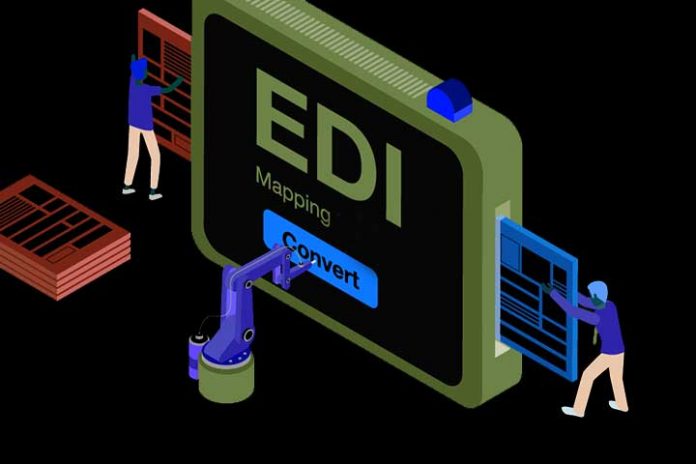Today, mapping encompasses more than only the initial mapping, i.e. the insertion of data into a map. Something is correctly assigned and fits together when it is mapped. Data mapping refers to the process of mapping data items between distinct data models in order to integrate information.
When it comes to EDI traffic, where data and information are exchanged, mapping is required to accurately assign the data source (sender) and destination (recipient). Internal formats are standardized and uniform message formats and vice versa. For this, the EDI mapping offers explicit instructions. Thus, as well as any common data transmission technique, proprietary client interfaces and individual settings for data exchange with each trading partner can be represented. EDI traffic works more smoothly when data formats are standardized, and no special programming is required.
Translation basis for EDI converter
The mapping connects the two formats’ source and target fields. In a sense, it serves as the EDI converter’s work instructions. It’s data conversion software that takes data from an internal system (the source) and turns it into a standard format (e.g. CSV, XML. EDIFACT, X.12, FLATFILE). The converter, on the other hand, writes incoming data from this format to interfaces (e.g., DB2 databases) at the receiver.
The converter will find all of the specs and instructions it needs to generate a new file in the chosen standard format in the mapping. Using the mappings also provides a great deal of versatility. For example, if you have considerable particular expertise in EDI programming or a relevant technology, you can construct customer-specific mappings and respond quickly and simply to your partners’ change requests.
Guide to the Data
Mapping is done in MapGui’s centre area (graphical tool for creating mappings). The required fields (invoice date, number, and amount) are dragged from the source area to this section, where they are changed and transformed to the proper format. As a result, the EDI mapping serves as a form of “data signpost.” By visualizing these tasks (mappings), you can keep track of your conversion tasks and processes at all times and respond quickly to changes. The produced mappings are saved in a transparent structure (XML) that all parties may read.
Example:
A customer creates a purchase order in SAP’s proprietary IDoc format, which he must convert to an EDIFACT format that the vendor can read. Essential information such as the purchase order date is not modified in terms of content during the mapping from source to destination format but translated so that it is legible in EDIFACT format ORDERS and can be processed further. Incoming invoices, for example, are the same way. Mappings should be titled “speaking” after the target module/message, such as EDIFACT INVOIC D96A.map in the case of the invoice. It is critical to remember that mapping is about more than just a technically valid conversion. Rather, the sender’s data must be correctly translated in order for the sender’s specifications to be met.
There are occasions when the communication between trading partners has unique characteristics that necessitate a higher level of competence in the use of mappings and mapping tools. Specifications agreed upon with partners, customized message types, and field functionalities are examples. Existing mappings must be adapted to the conditions of the unique communication features in these cases. An EDI partner can take over this task and train the next user group on how to utilize the features and application on a daily basis.
About Hevo:
EDI mapping has proven to be an effective technique for businesses because it allows you to automate your business transactions while also adding an element of accuracy and that makes Hevo Data the right choice for you. It will help simplify the ETL and management process of both the data sources and the data destinations.
Hevo is no code data pipeline which supports 100+ data sources it not only loads the data onto the desired data warehouse but also enriches the data and transforms it into an analysis-ready form without having to write a single line of code. Some of its notable features are that it has fault tolerance architecture, zero data loss, live support and monitoring, schema management, simple and interactive UI, etc.

